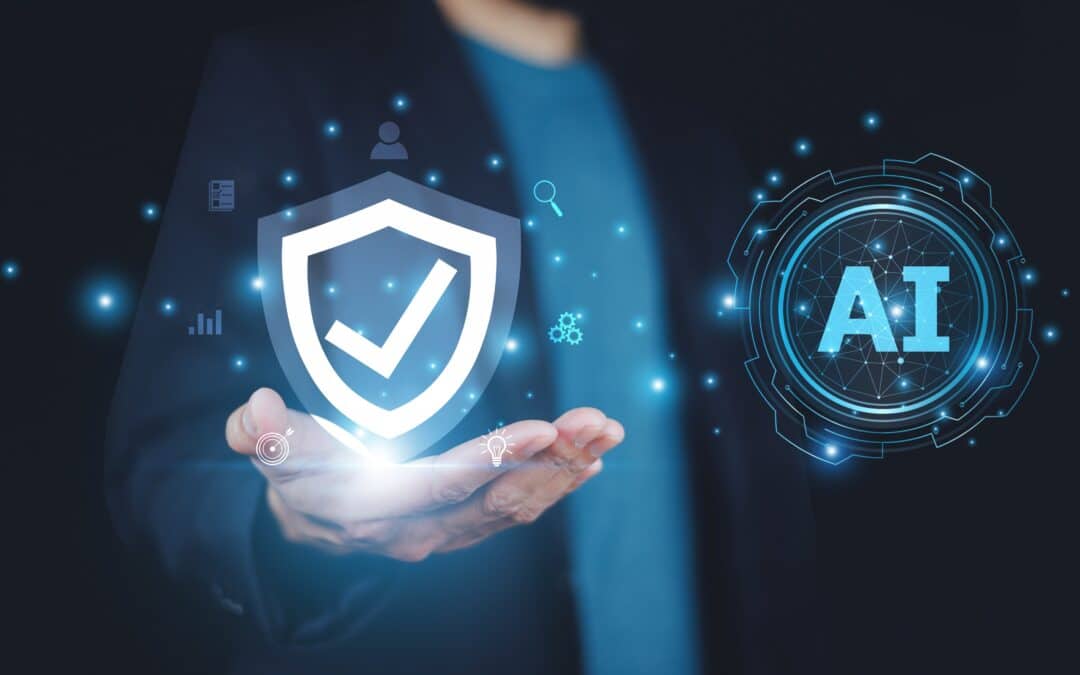Key Takeaways:
- Detect Before It’s Too Late: Insider threats are multifaceted, encompassing malicious actions, negligent behaviors, and external infiltrators, making comprehensive detection strategies essential.
- Protecting Your Enterprise: Effective insider threat management relies on a combination of technological solutions, such as user behavior analytics and data monitoring, robust policies, employee training, and psychological support.
- Advanced Solutions: The future of insider threat detection lies in using advanced analytics to predict risks while balancing strong security and employee privacy. Learn more about managing these risks with our Insider Risk Management Solutions.
Insider threat detection in corporate security is essential due to insiders’ access to sensitive information and potential for harm. This challenge extends beyond employees to contractors and automated systems, encompassing risks like data breaches and espionage.
With workplaces becoming digitalized, traditional security measures fall short, necessitating a comprehensive approach that blends technology, policy, and culture.
To address these challenges effectively, Veriato’s Insider Risk Management offers a robust solution. It integrates advanced monitoring tools with insightful analytics, helping organizations proactively identify and mitigate insider threats to safeguard their critical data and systems.
Understanding The Basics Of Insider Threats
Insider threats encompass a range of potentially harmful actions performed by individuals within an organization. These insiders have legitimate access to the company’s systems and data, which can be exploited for personal gain, to cause harm to the organization, or as a result of negligence.
——————————————
Secure Critical Data With Veriato
- Fortify Your Defenses: Proactively safeguard your business with monitoring and immediate alerts for unusual activities.
- Gain Unprecedented Visibility: Unleash the power of Veriato’s AI-based analytics to help identify insider risks before they turn into threats.
- Globally Acclaimed: Become part of an elite network of enterprises across more than 100 countries that trust Veriato for streamlined and fortified operations.
Experience the unique edge of Veriato and propel your business forward. Act now!
——————————————
Types Of Insider Threats
Malicious Insiders
Malicious insiders exploit their legitimate access to an organization’s assets with the intent to cause harm. Motivated by factors like financial incentives, personal grievances, or ideological beliefs, they represent a significant security risk. Their actions can range from data theft to sabotage, making them a formidable threat to organizational integrity.
Negligent Insiders
Negligent insiders are employees or contractors who, often unwittingly, put their organizations at risk through careless or uninformed behavior. This group is prone to making mistakes such as clicking on malicious links, sharing passwords, or improperly handling confidential information. Despite lacking malicious intent, their actions can lead to significant security breaches or data loss.
Infiltrators
Infiltrators are external individuals who manage to obtain insider status within an organization, either by manipulating existing employees or through direct unauthorized access. Their methods include social engineering tactics or collusion with malicious insiders to bypass security controls. Once inside, they can cause as much damage as any disgruntled employee, making them a critical threat to watch for.
Methods Of Identifying Insider Threats
Identifying insider threats requires combining technology, psychology, and organizational strategy. Unlike external threats, insider threats are nuanced and often hidden in plain sight, making detection complex. Here are key methods to identify these threats:
Behavioral Analysis
Behavioral Analysis involves two key strategies. First, User Behavior Analytics systems analyze user behavior patterns and flag anomalies that could indicate malicious activities. Then, we analyze the tone in chat or email as positive or negative and point out the tone becoming negative as a risk factor.
Access And Activity Logs
Data Monitoring and Analysis are critical for insider threat detection. Access and Activity Logs are regularly reviewed for unusual access patterns or modifications that could signify potential threats. Data Loss Prevention (DLP) tools are employed to monitor and control data transfers, preventing unauthorized access and exfiltration of data.
Regular Audits And Compliance Checks
Regular audits and compliance checks play a vital role. Conducting routine audits of systems and processes helps identify security gaps that insiders might exploit. Compliance checks ensure that all employees adhere to security policies and procedures.
Whistleblower Programs And Employee Reporting
Whistleblower programs and employee reporting are important methods for detecting insider threats. Employees are encouraged to report suspicious activities, and these programs must protect the anonymity and safety of whistleblowers to promote participation.
Physical Security Measures
Physical security measures are also essential. Surveillance and access controls in sensitive areas help deter and detect insider threats. When combined with digital monitoring, these measures create a comprehensive defense system against insider threats.
The Importance Of Insider Threat Detection In Modern Enterprises
In today’s fast-paced and increasingly digital business environment, the significance of insider threat detection cannot be overstated. As enterprises evolve, so do the complexities of their internal and external interactions, making them more vulnerable to insider threats. Here’s why insider threat detection is crucial:
Protection Of Sensitive Data
Insider threats represent a multifaceted risk to the sensitive data held by an organization. This includes confidential corporate strategies, proprietary technologies, and personal customer data. An effective insider threat detection program identifies potential breaches early, thus safeguarding this data.
Maintaining Business Continuity
Insider incidents can cause significant disruptions, affecting critical operations and services. By proactively detecting these threats, companies can avoid or minimize downtime and operational inefficiencies. This is achieved through continuous monitoring, quick incident response, and robust recovery plans.
Safeguarding Reputation
An organization’s reputation is highly susceptible to the negative impacts of insider incidents. News of data breaches or internal fraud can quickly erode public trust and confidence. An organization can effectively manage and mitigate these incidents by implementing timely detection and rapid response strategies.
Regulatory Compliance
In the face of stringent regulations like GDPR in Europe or HIPAA in the United States, compliance is not just a legal requirement but also a business imperative. Insider threat detection programs help organizations comply with these regulations by monitoring and controlling access to sensitive data.
Financial Stability
The financial impact of insider threats can be devastating, including direct losses from theft or fraud, legal costs, and expenses for remediation and system upgrades. Early detection of such threats can significantly reduce these financial risks.
Employee Trust And Morale
A robust insider threat detection system provides a secure and trustworthy work environment. Employees feel more confident and valued when they know their employer actively protects sensitive information and maintains a secure workplace. This enhances overall morale and fosters a culture of security awareness among staff.
In this regard, Veriato’s Insider Risk Management offers an advanced solution to safeguard your organization from insider threats. With Veriato, you can ensure continuous protection and peace of mind in your security strategies.
Strategies For Mitigating Insider Risks
Mitigating insider risks requires a strategic approach that combines technology, policy, and human elements. An effective strategy not only detects potential threats but also prevents them. Here are key strategies for mitigating insider risks:
Advanced Security Technologies
Utilize advanced security solutions, such as AI-driven behavioral analytics, anomaly detection systems, and DLP tools, to monitor and analyze user activities.
Comprehensive Security Policies
Establish clear policies regarding data access, use, and security. These policies should be regularly updated and communicated to all employees.
Regular Training And Awareness Programs
Conduct ongoing training sessions to educate employees about security best practices and the risks associated with insider threats.
Psychological Support And Employee Assistance Programs
Supporting employees dealing with personal or professional issues can prevent potential insider threats from disgruntlement or stress.
Incident Response Plan
Develop a robust incident response plan that includes procedures for dealing with insider threat incidents. This plan should be regularly tested and updated.
Promoting A Culture Of Security
Foster a workplace culture where security is a shared responsibility. Encourage open communication and reporting of suspicious activities without fear of retribution.
Regular Audits And Compliance Checks
Conduct periodic audits of systems and processes to identify vulnerabilities that insiders could exploit.
Best Practices In Insider Threat Management
Effective insider threat management requires a combination of technological and human-centric approaches. Key best practices include:
Establish A Dedicated Insider Threat Program
Organizations should establish a formal program for managing insider threats involving key IT, HR, legal, and security departments. This program should define roles and responsibilities, establish communication protocols, and ensure all departments work collaboratively to identify and mitigate risks. Training and awareness campaigns should be part of the program to educate employees about the signs of insider threats and the importance of security.
Continuous Monitoring And Detection
Continuous monitoring systems are essential for detecting suspicious activities in real time. These systems should monitor network activity, email traffic, and access to sensitive data, flagging unusual behavior patterns that may indicate a threat. The monitoring should be comprehensive, covering technical aspects and behavioral patterns that could signal malicious intent.
Incorporate Insider Threat Awareness Into Corporate Culture
It is crucial to integrate insider threat awareness into the organizational culture. This involves regularly communicating the importance of threat detection and encouraging employees to be vigilant.
Training sessions, workshops, and regular security policy updates can help cultivate a security-conscious culture. Employees should feel responsible for maintaining security and understand how their actions can impact the organization’s safety.
Use Of Predictive Analytics
Leverage predictive analytics to identify potential insider threats proactively. Organizations can predict risky behaviors and take preemptive measures by analyzing patterns and trends in data. Predictive analytics can be particularly useful in detecting subtle, non-obvious signs of potential threats, allowing for early intervention.
Regular Risk Assessments
Conducting regular risk assessments is vital in identifying and mitigating potential insider threats. These assessments should be comprehensive, encompassing technological, physical, and human factors.
They should identify vulnerabilities within the organization and recommend appropriate measures to address them. Regular updates to the risk assessment process are important to adapt to changing threat landscapes.
Final Thoughts
Insider threats stemming from malicious, negligent, or infiltrated individuals pose significant challenges to business operations’ confidentiality, integrity, and continuity. As such, modern enterprises must adopt a multifaceted approach that integrates advanced technological solutions, robust security policies, regular training, and a culture of security awareness.
Organizations can significantly reduce the risk of insider threats by implementing continuous monitoring, predictive analytics, and regular risk assessments, along with fostering a supportive and vigilant workplace environment. This proactive stance not only safeguards sensitive data and financial stability but also reinforces employee trust, morale, and the overall reputation of the enterprise.
With this, Veriato’s Insider Risk Management emerges as an essential tool, offering cutting-edge solutions to enhance your organization’s security posture against insider threats. By integrating Veriato’s comprehensive monitoring and analytics capabilities, you can take a decisive step toward fortifying your enterprise against these risks.
Read also:
- How to Monitor User Activity
- The Importance of User Behavior Analytics
- Using AI to Detect & Prove HR Related Employee Violations
Frequently Asked Questions
What role does HR play in insider threat detection?
HR is crucial in conducting thorough background checks, facilitating ongoing security training, and managing employee grievances to mitigate risks of insider threats.
Can insider threats come from temporary staff or contractors?
Yes, temporary staff and contractors, like permanent employees, can pose insider threats, hence the need for appropriate screening and monitoring processes for all personnel.
How often should insider threat detection policies be reviewed?
Insider threat policies should be reviewed at least annually or whenever significant changes occur in the IT infrastructure or business processes.
Are there specific industries more prone to insider threats?
While all industries are susceptible, sectors like finance, healthcare, and technology, which handle large volumes of sensitive data, are often more targeted.
How can technology help in detecting insider threats?
Technology, especially AI and machine learning, can help analyze behavioral patterns and identify anomalies indicative of insider threats.
What is the most challenging aspect of managing insider threats?
The most challenging aspect is often balancing effective detection and prevention of insider threats with maintaining employee privacy and trust.
Can a strong company culture reduce the risk of insider threats?
Yes, a strong company culture that emphasizes security awareness and ethical behavior can significantly reduce the risk of insider threats.
Is it necessary to have a dedicated insider threat management team?
While larger organizations may benefit from a dedicated team, smaller enterprises can manage with a cross-functional team that includes members from various departments.

Insider Risk – How Prepared Are You?
Not every company is equally prepared to deal with insider risk. This report outlines the four stages of insider risk maturity and explores how to improve your insider risk preparedness.




